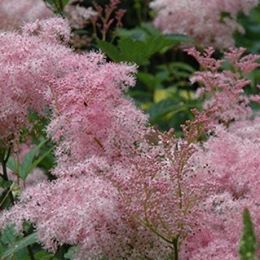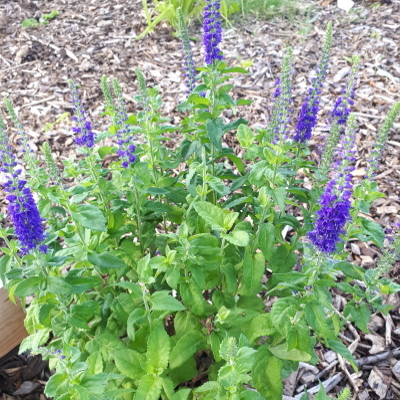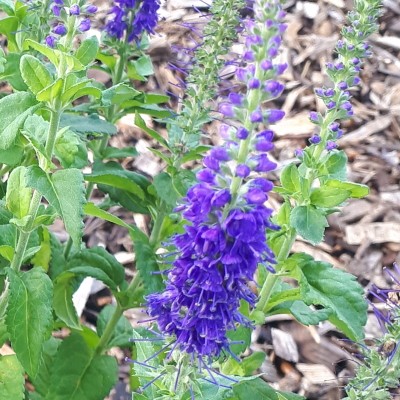-
Out of stock
 Single daisy-like flowers in shades of pink, red, rose, or white completely cover the 75 cm high bushy plants from May through June. Gorgeous spring and summer colour in sun or partial shade. Invaluable for cutting, cut as soon as colour shows. If cutting for dried flowers harvest immediately after bloom opens. Avoid high fertility. Moist, well-drained soil is best–try raised beds or containers if your soil is heavy. Hardy to Zone 5 with protection. These daisies often self-seed and interestingly, direct sown or self-sown established plants are hardier than transplants.
Single daisy-like flowers in shades of pink, red, rose, or white completely cover the 75 cm high bushy plants from May through June. Gorgeous spring and summer colour in sun or partial shade. Invaluable for cutting, cut as soon as colour shows. If cutting for dried flowers harvest immediately after bloom opens. Avoid high fertility. Moist, well-drained soil is best–try raised beds or containers if your soil is heavy. Hardy to Zone 5 with protection. These daisies often self-seed and interestingly, direct sown or self-sown established plants are hardier than transplants. -
Out of stock
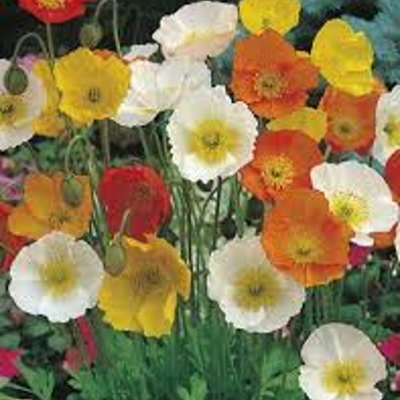 Papaver nudicaule. The Iceland Poppy is a hardy short-lived perennial. It self sows easily so will last for years to come. The cup-shaped blooms have a texture like crepe paper and appear in a range of subdued pastel colours; apricot, gold, tangerine, and white. Sow Iceland Poppy seeds in early spring or late fall where they are to grow permanently. The flower stalks grow to around 30cm tall and are among the longest-lasting poppies as cut flowers. Use a candlestick to seal the cut stem to prolong them as cut flowers. They are highly attractive to bees. Plant in late fall or early spring. Poppy seeds need to be cold stratified to germinate. Poppies only need soil that is ordinary and moist, but well-drained. The seeds should not be planted deeply; they just need to be compressed into the soil, as they need light to germinate. The best method for planting is to mix one part seed with 5 parts sand and scatter over the prepared growing area.
Papaver nudicaule. The Iceland Poppy is a hardy short-lived perennial. It self sows easily so will last for years to come. The cup-shaped blooms have a texture like crepe paper and appear in a range of subdued pastel colours; apricot, gold, tangerine, and white. Sow Iceland Poppy seeds in early spring or late fall where they are to grow permanently. The flower stalks grow to around 30cm tall and are among the longest-lasting poppies as cut flowers. Use a candlestick to seal the cut stem to prolong them as cut flowers. They are highly attractive to bees. Plant in late fall or early spring. Poppy seeds need to be cold stratified to germinate. Poppies only need soil that is ordinary and moist, but well-drained. The seeds should not be planted deeply; they just need to be compressed into the soil, as they need light to germinate. The best method for planting is to mix one part seed with 5 parts sand and scatter over the prepared growing area. -
Out of stock
 This delightful Japanese Catmint has many merits. Both the foliage and the flowers are fragrant. It blooms the first year from seed, unlike most perennials. It is upright and nicely branched, rather than sprawling. Make it a centerpiece of your containers and sunny-to-partly-shaded garden areas! Panther Dark Blue walked off with the Bronze Medal at Holland's prestigious Plantarium competition in 2015. The attractive little plant is much more compact than other catmint species, standing just 20 cm high and 25 cm wide. The foliage is bright green, glossy, and toothed, releasing a strong, heavenly fragrance from spring through fall. Profuse bloomer! Medium to dark blue, these tubular flowers reach up to 5 cm long, held in nice clusters on the top of the plant. The blossoms are fragrant, and they begin in early summer and go right through into early fall. You'll be amazed by the flower power of this petite plant.
This delightful Japanese Catmint has many merits. Both the foliage and the flowers are fragrant. It blooms the first year from seed, unlike most perennials. It is upright and nicely branched, rather than sprawling. Make it a centerpiece of your containers and sunny-to-partly-shaded garden areas! Panther Dark Blue walked off with the Bronze Medal at Holland's prestigious Plantarium competition in 2015. The attractive little plant is much more compact than other catmint species, standing just 20 cm high and 25 cm wide. The foliage is bright green, glossy, and toothed, releasing a strong, heavenly fragrance from spring through fall. Profuse bloomer! Medium to dark blue, these tubular flowers reach up to 5 cm long, held in nice clusters on the top of the plant. The blossoms are fragrant, and they begin in early summer and go right through into early fall. You'll be amazed by the flower power of this petite plant. -
Out of stock
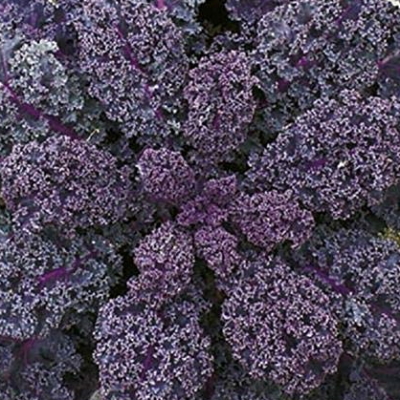
The broad, frilly, purple leaves grow on 60-90 cm tall, upright stalks. Red color on a blue-green background. Great for baby leaf and bunching. Scarlet has great flavour either as baby leaf or mature kale, and the flavour improves after frost. This kale is a must in an organic garden and is highly decorative in salads and stir-fries. Plant Scarlet kale in cow pots 4-6 weeks before the last frost, direct sow in early spring, and in mid-July for a fall crop. Scarlet Kale can grow 60-90 cm high. Boiling kale loses much of the nutritious properties while steaming and microwaving keep more cancer-fighting properties.
-
Out of stock
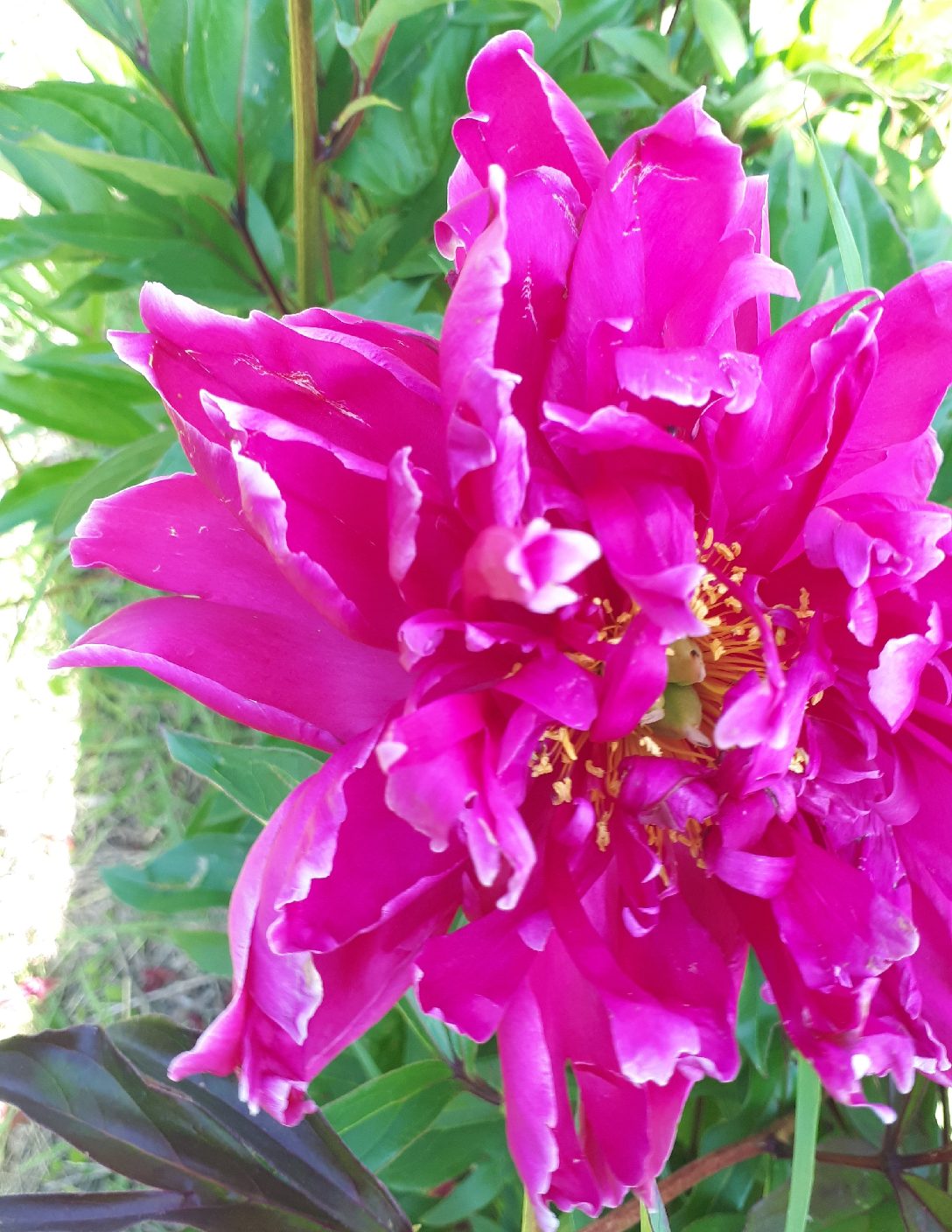
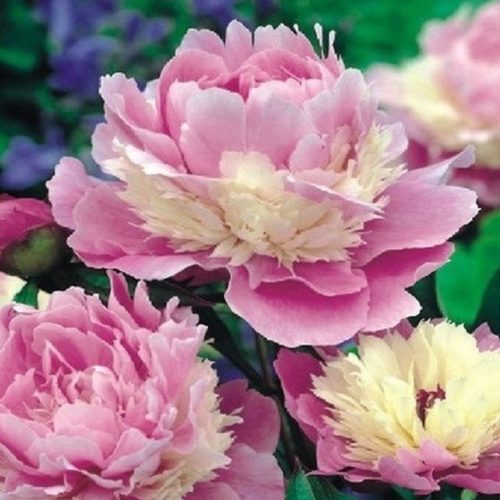 Mixed heritage variety peony plants. $10.00 each root or 5 roots for $35.00
Mixed heritage variety peony plants. $10.00 each root or 5 roots for $35.00 -
-
Out of stock
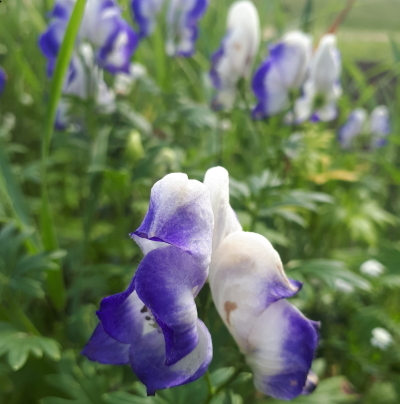 25 seeds per order. Purple Monkshood seeds 2020 harvest.
25 seeds per order. Purple Monkshood seeds 2020 harvest. -
Out of stock
 Tiny blue flowers are an iconic addition to any garden. Although not a ‘true’ forget-me-not, this species has very similar flowers. This easy-to-grow annual blooms just weeks after planting and grows in almost any sunny spot. Chinese Forget-Me-Not attracts bees, butterflies, and hummingbirds to the garden and makes for gorgeous cut flowers. Self-seeding annual.
Tiny blue flowers are an iconic addition to any garden. Although not a ‘true’ forget-me-not, this species has very similar flowers. This easy-to-grow annual blooms just weeks after planting and grows in almost any sunny spot. Chinese Forget-Me-Not attracts bees, butterflies, and hummingbirds to the garden and makes for gorgeous cut flowers. Self-seeding annual. -
Out of stock
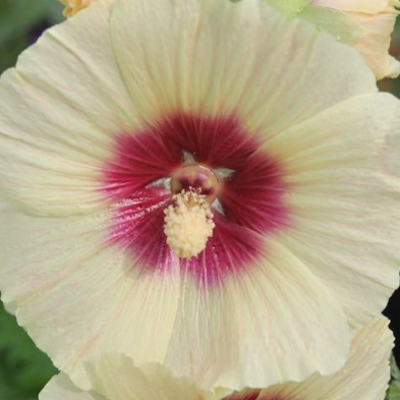
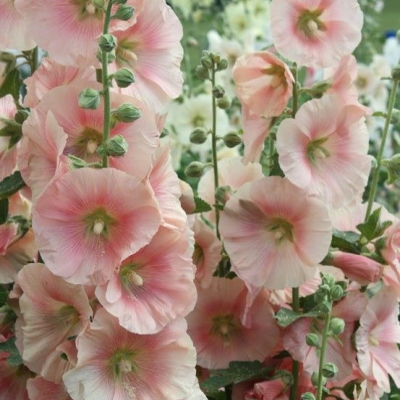 Hollyhock Seeds -Coral & Indian Spring Mix The semi-tall stalks of Indian Spring Hollyhock are filled with single and semi-double blooms in shades of pink, coral, white, cream, purple, and lavender. Prolifically blooming, Indian Spring Mix is known to bloom in its first year, which is unusual for Hollyhocks.
Hollyhock Seeds -Coral & Indian Spring Mix The semi-tall stalks of Indian Spring Hollyhock are filled with single and semi-double blooms in shades of pink, coral, white, cream, purple, and lavender. Prolifically blooming, Indian Spring Mix is known to bloom in its first year, which is unusual for Hollyhocks. -
Out of stock
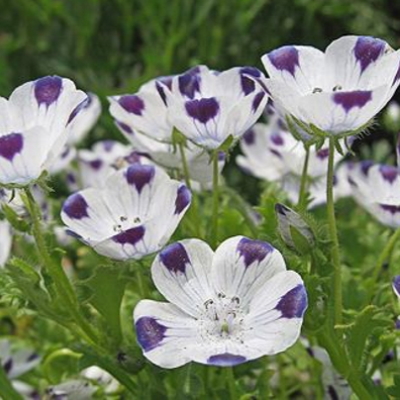
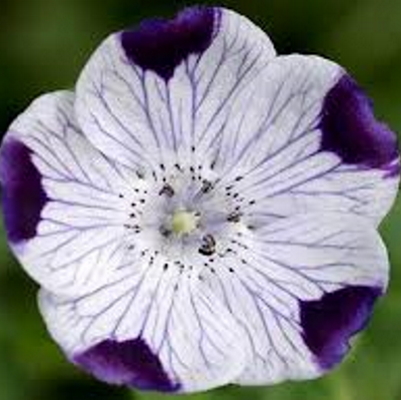 Five spot wildflowers are named for their distinct flowers: 2.5 cm light blue on white blossoms of five petals, each of which is tipped with a vivid, deep purple spot. They are reasonably compact plants that grow to 30 cm high and 20 cm wide and do not spread over the course of the summer. They prefer cool climates, germinating best in soil temperatures of 13-18 C. Perfect for cool springs. They should be able to survive if given lots of shade. They are annuals, and they’ll die back with the first frost. If allowed to die back naturally they reseeds and you will have new plants next year. They bloom consistently and impressively all spring long.
Five spot wildflowers are named for their distinct flowers: 2.5 cm light blue on white blossoms of five petals, each of which is tipped with a vivid, deep purple spot. They are reasonably compact plants that grow to 30 cm high and 20 cm wide and do not spread over the course of the summer. They prefer cool climates, germinating best in soil temperatures of 13-18 C. Perfect for cool springs. They should be able to survive if given lots of shade. They are annuals, and they’ll die back with the first frost. If allowed to die back naturally they reseeds and you will have new plants next year. They bloom consistently and impressively all spring long. -
Out of stock
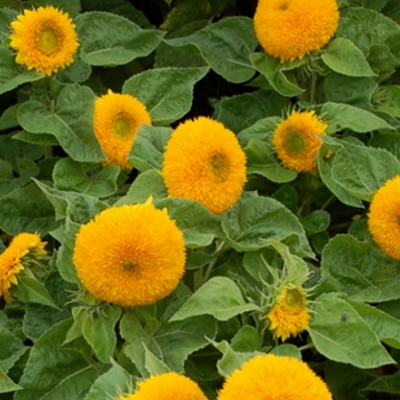
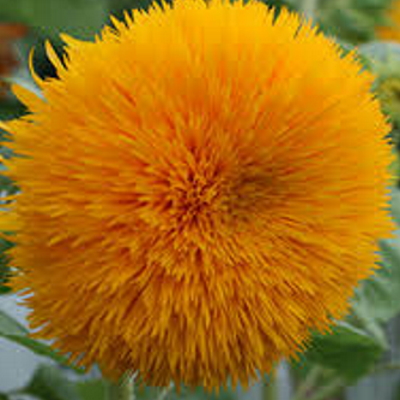 Sunflower ‘Teddy Bear’ is a short, bushy plant with fluffy, golden-yellow blooms that appear from mid-summer to the first frost in autumn. The mature size of Teddy Bear sunflower plants is 4 to 5 feet (1.4 m.). Growing Teddy Bear sunflowers by seed isn’t complicated. The most important thing is to plant seeds where your Teddy Bear sunflower plants will be exposed to full sunlight. Well-drained soil is also an absolute requirement for any type of sunflower. Plant Teddy Bear sunflower seeds after you’re sure all danger of frost has passed. Prepare the soil prior to planting sunflowers by digging a generous amount of compost, well-rotted manure, or other organic matter into the top 15-20 cm of soil. Sow seeds in groups of three, at a depth of ½ inch. Thin the plants to a distance of 40-60 cm when the true leaves appear. Water as needed to keep the soil moist, but not drenched, until your sunflower ‘Teddy Bear’ plants are established Sunflower seeds should be direct sown in the garden. If starting 3-4 weeks early plant in large cow pots so roots are not disturbed when transplanting into the garden.
Sunflower ‘Teddy Bear’ is a short, bushy plant with fluffy, golden-yellow blooms that appear from mid-summer to the first frost in autumn. The mature size of Teddy Bear sunflower plants is 4 to 5 feet (1.4 m.). Growing Teddy Bear sunflowers by seed isn’t complicated. The most important thing is to plant seeds where your Teddy Bear sunflower plants will be exposed to full sunlight. Well-drained soil is also an absolute requirement for any type of sunflower. Plant Teddy Bear sunflower seeds after you’re sure all danger of frost has passed. Prepare the soil prior to planting sunflowers by digging a generous amount of compost, well-rotted manure, or other organic matter into the top 15-20 cm of soil. Sow seeds in groups of three, at a depth of ½ inch. Thin the plants to a distance of 40-60 cm when the true leaves appear. Water as needed to keep the soil moist, but not drenched, until your sunflower ‘Teddy Bear’ plants are established Sunflower seeds should be direct sown in the garden. If starting 3-4 weeks early plant in large cow pots so roots are not disturbed when transplanting into the garden. -
